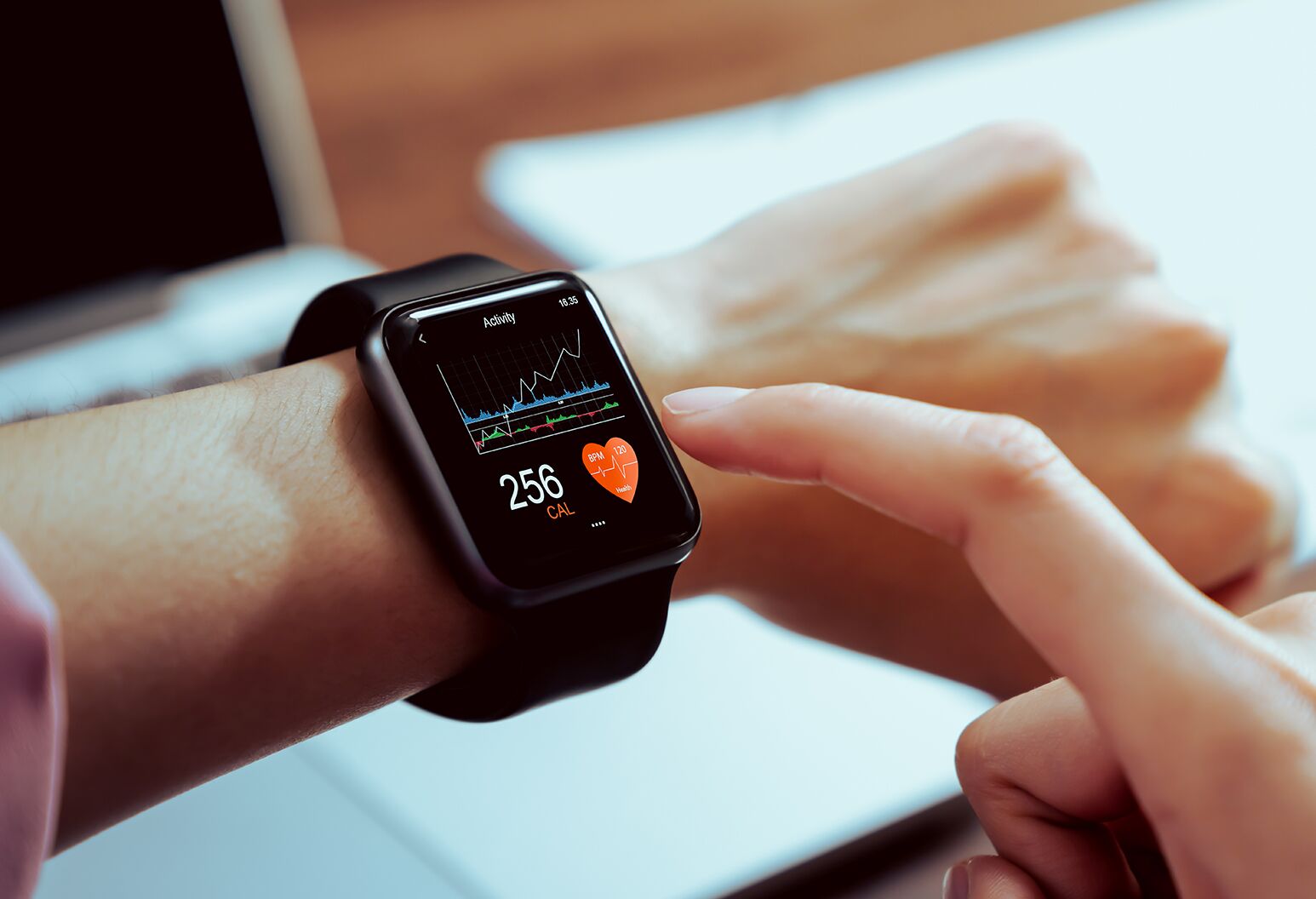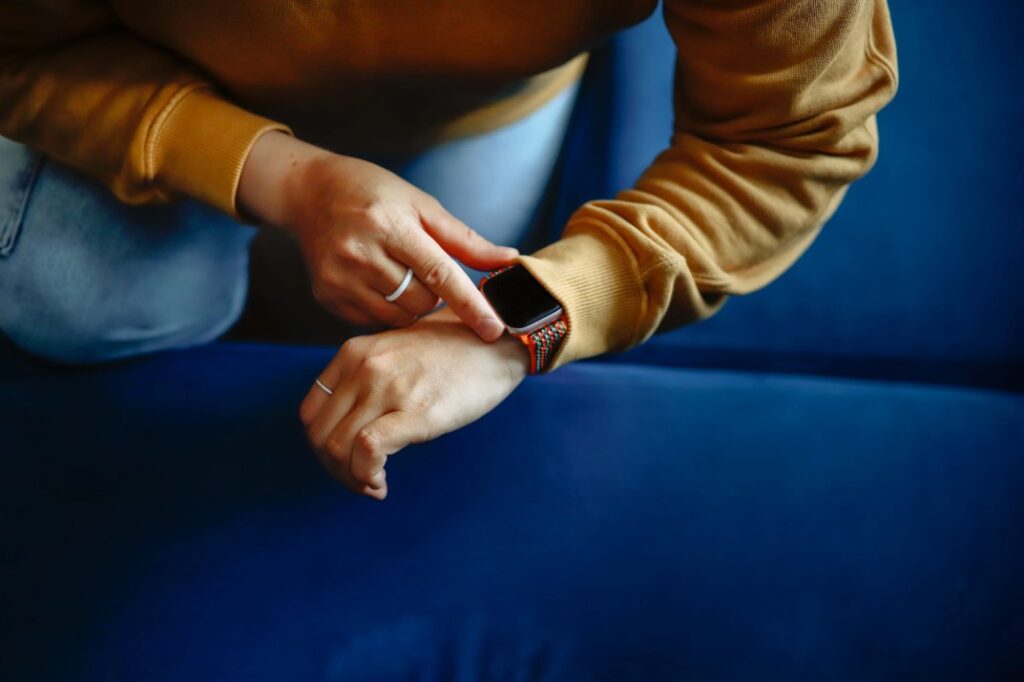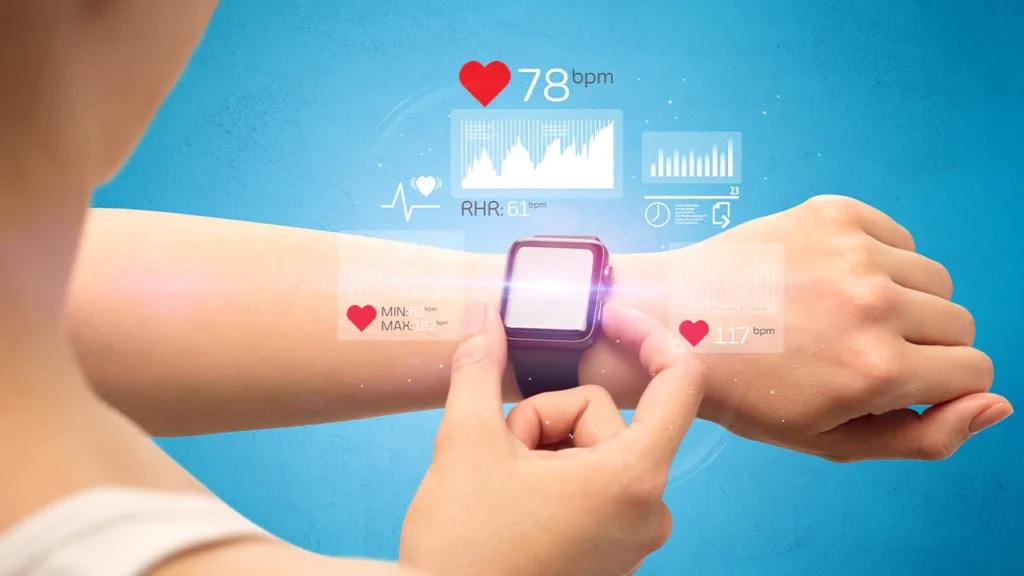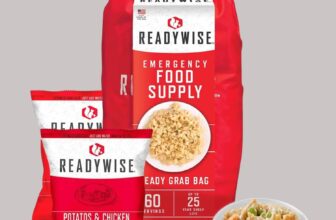
For years, fitness trackers were obsessed with counting things: steps, calories, minutes of activity. But as the wearable industry matures, these “surface metrics” are slowly being replaced by something deeper, heart rate variability (HRV) and recovery tracking. These data points don’t just tell you how much you’ve moved, but how well your body is adapting, restoring, and preparing for future performance.
In this analysis, we’ll explore why HRV has become the new gold standard for fitness intelligence, how it’s measured, and which modern trackers are leading this quiet revolution. We’ll also touch on lab-style HRV testing you can reproduce at home for those who want to validate their data like a sports scientist.
Table of Contents
What Is HRV and Why It Matters
Heart Rate Variability (HRV) measures the subtle changes in time between consecutive heartbeats, known as R-R intervals. While your resting heart rate tells you how fast your heart beats, HRV reveals how adaptable your autonomic nervous system (ANS) is. A higher HRV typically indicates better cardiovascular health, improved stress resilience, and a well-recovered body.
In sports physiology, HRV is used to guide recovery, adjust training intensity, and even predict illness or overtraining. That’s why professional athletes, from cyclists to CrossFit competitors, rely on HRV as their “internal readiness score.” For everyday users, it’s the single best indicator of how lifestyle, sleep, and stress are affecting overall well-being.
From Step Counters to Stress Monitors
When the first wave of wearables hit the market in the early 2010s, step counts were the industry benchmark. Every tracker claimed accuracy in measuring your 10,000-step goal. Later came calorie estimates, which promised to quantify energy burn, often wildly inaccurately. But by 2023-2025, the focus has shifted from “how much did you move?” to “how did your body respond?”
That’s where HRV, skin temperature, and overnight recovery metrics entered the picture. Devices now combine photoplethysmography (PPG), accelerometers, and AI-driven signal analysis to translate raw physiological data into actionable health insights. The trend is clear: steps and calories are out, recovery and readiness are in.
Source: autonomhealth.com
How HRV Is Measured in Modern Trackers
Most wrist-based trackers use optical sensors (green or infrared LEDs) to capture blood flow pulses and derive R-R intervals. The challenge? Even small motion artifacts can distort HRV readings. That’s why certain brands are adopting dual-LED systems, multi-frequency sensors, or overnight sampling when the wrist is still. For the most reliable results, compare HRV values only under the same conditions, ideally during sleep or at the same time each morning.
Some trackers like Polar and Garmin also allow HRV measurement using chest straps, which capture ECG-quality signals and provide near-clinical accuracy. If you want to experiment, you can perform lab-style HRV testing you can reproduce at home to validate your wearable’s readings against a chest sensor baseline.
Top Fitness Trackers for HRV and Recovery (2025 Edition)
Our research team at Tech IT EZ analyzed the latest HRV accuracy, recovery algorithms, and user data correlation metrics from the leading wearables. The following table summarizes the most reliable performers, drawn from our latest round-up of the best fitness trackers in 2025.
|
Device |
HRV Accuracy (vs ECG) |
Recovery Scoring Quality |
Battery Life |
Key Advantage |
Overall Rating |
| Garmin Venu 3 | 9.2 / 10 | Excellent (Body Battery + HRV Status) | Up to 14 days | Robust HRV sampling during sleep and rest | 9.1 / 10 ⭐⭐⭐⭐⭐ |
| Polar Ignite 3 | 9.0 / 10 | Strong (Nightly Recharge system) | Up to 5 days | Combines HRV with autonomic balance insights | 8.9 / 10 ⭐⭐⭐⭐☆ |
| Oura Ring Gen 3 | 8.8 / 10 | Excellent (Recovery & Readiness Scores) | Up to 7 days | Continuous overnight HRV and temperature tracking | 8.8 / 10 ⭐⭐⭐⭐☆ |
| Fitbit Charge 6 | 8.5 / 10 | Good (Daily Readiness Score) | Up to 7 days | Accessible HRV and recovery data for casual users | 8.5 / 10 ⭐⭐⭐⭐☆ |
| Apple Watch Series 10 | 8.2 / 10 | Good (Trends in HRV & VO₂ Max) | Up to 18 hrs (daily charging required) | Integrates HRV into a broader health ecosystem | 8.3 / 10 ⭐⭐⭐⭐☆ |
Key Takeaways
- Garmin and Polar remain the most physiologically robust for HRV accuracy and recovery analysis.
- Oura Ring leads in long-term trend consistency, particularly for sleep-driven HRV monitoring.
- Apple and Fitbit make HRV accessible but less actionable for training readiness.
Why HRV Predicts Recovery Better Than Steps or Calories
Unlike step counts or calorie burn estimates, HRV reflects internal adaptation. Two users might each log 10,000 steps, but their HRV trends could reveal very different recovery states. Elevated HRV suggests parasympathetic (rest-and-digest) dominance, a signal of good recovery. Low or declining HRV often indicates sympathetic stress, fatigue, or poor sleep.
Calories burned depend on algorithms and user-entered data like weight or age. HRV, however, is grounded in real-time physiological measurement. When tracked consistently, it becomes a personal baseline for resilience. Many elite coaches now use HRV to decide rest days or modify training load. The same principle applies to office workers managing chronic stress, HRV shows whether the body is coping or crashing.

Source: onepeloton.com
Lab-Style HRV Testing You Can Do at Home
To verify how accurate your tracker is, you can recreate simple field tests similar to those used in sports tech validation. We’ve detailed methods in our guide to lab-style HRV testing you can reproduce at home. In short:
- Use a reliable ECG chest strap (e.g., Polar H10) as your reference device.
- Run a 5-minute resting HRV test simultaneously with your wrist tracker.
- Compare RMSSD or SDNN values, within ±10% deviation is considered excellent.
- Repeat under the same conditions daily to establish a consistent trend.
This kind of self-testing demystifies your data. Instead of treating HRV as a mysterious “score,” you’ll see exactly how lifestyle choices, caffeine, alcohol, and sleep deprivation affect your recovery patterns.
Recovery Metrics Beyond HRV ─ The Full Picture
Modern wearables don’t rely solely on HRV. They combine multiple indicators into a holistic readiness index:
- Resting heart rate (RHR): Elevated RHR usually correlates with lower HRV and higher stress.
- Sleep stages: Deep and REM proportions reveal recovery quality. HRV often peaks during REM.
- Skin temperature: Subtle increases may indicate illness or poor recovery.
- Respiratory rate: Changes can reflect overtraining or stress load.
By integrating these signals, recovery scores become multi-dimensional. That’s why trackers like Garmin’s “Body Battery” or Oura’s “Readiness” feel intuitive, they translate physiology into a daily decision tool.

Source: news-medical.net
Practical Applications ─ Using HRV to Optimize Training and Rest
Once you establish your personal HRV baseline, trends become more meaningful than absolute numbers. For example:
- If HRV drops significantly for two days in a row, consider lighter workouts or active recovery.
- Consistently high HRV indicates readiness for higher training load or stress resilience.
- Post-illness recovery can be tracked via gradual HRV normalization.
- Sleep deprivation or heavy alcohol consumption often causes steep HRV declines for 24-48 hours.
These patterns make HRV a powerful feedback loop. It’s like having a built-in early warning system for burnout, allowing for proactive adjustments instead of reactive recovery.
Common Myths About HRV
- Myth 1: “Higher HRV is always better.” Not necessarily. Optimal HRV is personal and contextual. What matters is stability and trend direction, not competition with others’ scores.
- Myth 2: “You need expensive medical gear.” Modern trackers have narrowed the accuracy gap with ECG devices to within 5-10% when used properly.
- Myth 3: “Daily fluctuations mean something’s wrong.” HRV naturally varies with stress, temperature, hydration, and sleep. Focus on weekly averages instead of single readings.
How HRV Data Is Being Used in Research
Recent studies in 2024–2025 have validated HRV as a predictor of cognitive fatigue, immune function, and even emotional regulation. Several peer-reviewed papers in the Journal of Sports Science & Medicine and Frontiers in Physiology note that HRV is now the strongest non-invasive biomarker for all-cause stress load.
Tech companies are now merging HRV data with machine learning models to predict burnout risk, cardiovascular irregularities, and optimal sleep windows. Expect next-gen trackers to shift from “tracking” to “forecasting” your health patterns, a major leap forward from counting steps.

Source: gonoise.com
HRV and Mental Health ─ The Overlooked Link
HRV reflects your nervous system’s balance between fight-or-flight (sympathetic) and rest-and-digest (parasympathetic) activity. Low HRV often corresponds to chronic anxiety, emotional stress, or poor sleep hygiene. In contrast, consistent HRV improvement signals better autonomic flexibility, essentially, how well your body can shift gears under pressure.
That’s why mental health professionals are beginning to integrate HRV biofeedback into mindfulness and cognitive behavioral therapy sessions. By tracking your nervous system’s responses in real time, you can train yourself to recover faster from daily stressors.
Data-Backed Insights Most People Ignore
Most users focus on the numbers but ignore the context. That’s where deeper analysis matters. Our long-term review of wearable datasets revealed three consistent trends, discussed further in our feature on data-backed insights most people ignore:
- HRV responds more quickly to psychological stress than physical strain, and emotional recovery often lags behind physical recovery by 24–36 hours.
- Night-time HRV correlates better with readiness than daytime readings, due to reduced movement artifacts.
- Chronic low HRV is often accompanied by poor sleep efficiency, even when total hours slept appear normal.
The Future of Fitness Trackers ─ Predictive Recovery and Personal Baselines
The next evolution of wearable tech will be predictive recovery, using HRV, skin temperature, and respiratory patterns to forecast fatigue before you feel it. Instead of reacting to tiredness, your device will warn you hours ahead, allowing micro-adjustments to sleep or hydration.
In 2025, several manufacturers are already testing AI-enhanced HRV trend forecasting. By combining individual baselines with global datasets, wearables will personalize recommendations the way continuous glucose monitors do for nutrition. The line between “fitness tracker” and “health companion” is rapidly disappearing.
Source: wellable.co
Conclusion ─ From Counting to Understanding
HRV and recovery metrics are shifting the entire wearable industry toward more meaningful insights. Instead of shallow step goals or calorie approximations, users now gain data that truly reflects their biological reality. Whether you’re an athlete fine-tuning performance or someone managing stress at work, HRV offers a mirror into your body’s adaptability.
And the beauty is, you don’t need a lab to get started, just curiosity, consistency, and the willingness to explore your own data trends. Try a few days of side-by-side testing, read your recovery signals carefully, and you’ll begin to see what steps and calories never could: how well you’re really doing inside.
FAQs
For deeper analysis, explore our latest round-up of the best fitness trackers in 2025 to compare HRV precision, battery performance, and recovery algorithms side by side.







